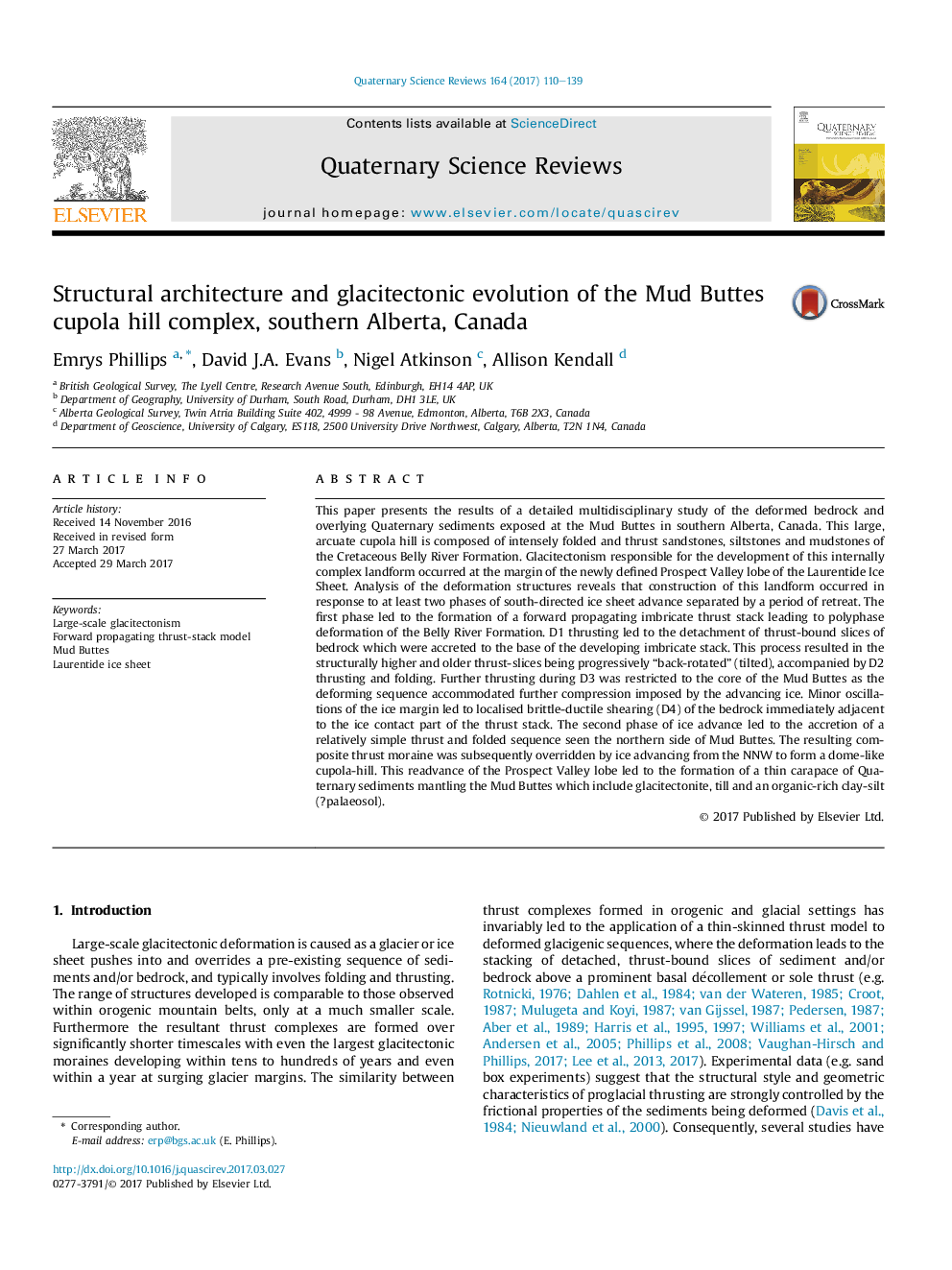| کد مقاله | کد نشریه | سال انتشار | مقاله انگلیسی | نسخه تمام متن |
|---|---|---|---|---|
| 5786754 | 1640771 | 2017 | 30 صفحه PDF | دانلود رایگان |
عنوان انگلیسی مقاله ISI
Structural architecture and glacitectonic evolution of the Mud Buttes cupola hill complex, southern Alberta, Canada
ترجمه فارسی عنوان
معماری سازه و تکامل گلایکوکتونیک مجتمع تپه کوهی گلدان، جنوب آلبرتا، کانادا
دانلود مقاله + سفارش ترجمه
دانلود مقاله ISI انگلیسی
رایگان برای ایرانیان
کلمات کلیدی
گلچیتکتونیزم در مقیاس بزرگ، مدل پیش رانده شدن پله به جلو، بوته گلابی ورق یخ لاورانتی،
موضوعات مرتبط
مهندسی و علوم پایه
علوم زمین و سیارات
زمین شناسی
چکیده انگلیسی
This paper presents the results of a detailed multidisciplinary study of the deformed bedrock and overlying Quaternary sediments exposed at the Mud Buttes in southern Alberta, Canada. This large, arcuate cupola hill is composed of intensely folded and thrust sandstones, siltstones and mudstones of the Cretaceous Belly River Group. Glacitectonism responsible for the development of this internally complex landform occurred at the margin of the newly defined Prospect Valley lobe of the Laurentide Ice Sheet. Analysis of the deformation structures reveals that construction of this landform occurred in response to at least two phases of south-directed ice sheet advance separated by a period of retreat. The first phase led to the formation of a forward propagating imbricate thrust stack leading to polyphase deformation of the Belly River Group. D1 thrusting led to the detachment of thrust-bound slices of bedrock which were accreted to the base of the developing imbricate stack. This process resulted in the structurally higher and older thrust-slices being progressively “back-rotated” (tilted), accompanied by D2 thrusting and folding. Further thrusting during D3 was restricted to the core of the Mud Buttes as the deforming sequence accommodated further compression imposed by the advancing ice. Minor oscillations of the ice margin led to localised brittle-ductile shearing (D4) of the bedrock immediately adjacent to the ice contact part of the thrust stack. The second phase of ice advance led to the accretion of a relatively simple thrust and folded sequence seen the northern side of Mud Buttes. The resulting composite thrust moraine was subsequently overridden by ice advancing from the NNW to form a dome-like cupola-hill. This readvance of the Prospect Valley lobe led to the formation of a thin carapace of Quaternary sediments mantling the Mud Buttes which include glacitectonite, till and an organic-rich clay-silt (?palaeosol).
ناشر
Database: Elsevier - ScienceDirect (ساینس دایرکت)
Journal: Quaternary Science Reviews - Volume 164, 15 May 2017, Pages 110-139
Journal: Quaternary Science Reviews - Volume 164, 15 May 2017, Pages 110-139
نویسندگان
Emrys Phillips, David J.A. Evans, Nigel Atkinson, Allison Kendall,
